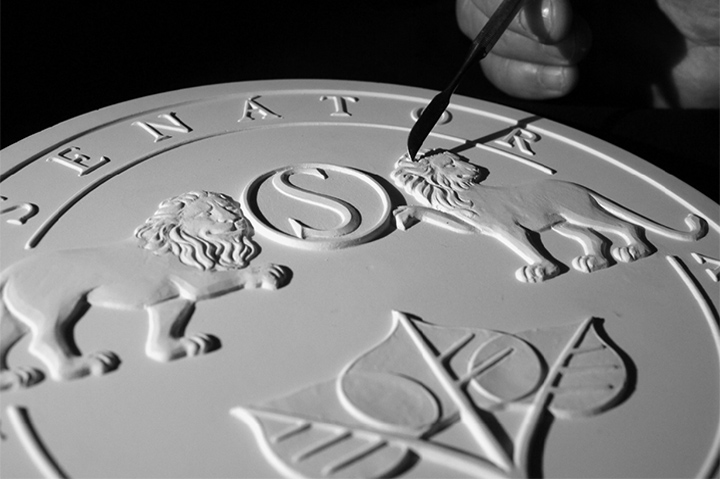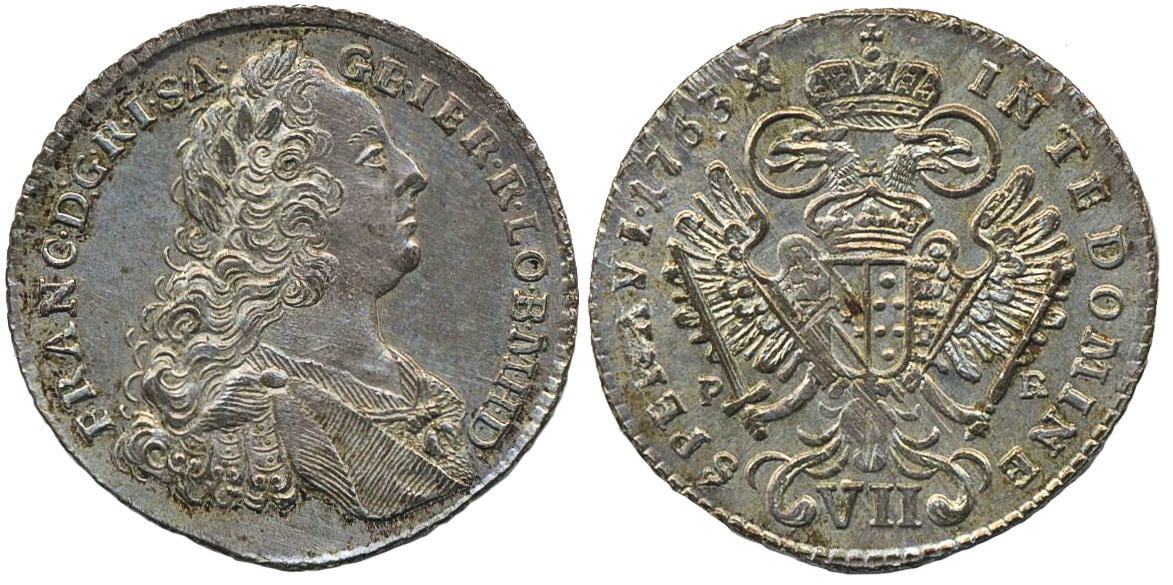Excellent Ideas On Minting Czechoslovakia Medals
Excellent Ideas On Minting Czechoslovakia Medals
Blog Article
What Is A Plaster Model Taken To Be Scanned To Create An Accurate Digital 3d Model Of Gold-Plated Medals Or Coins?
The scanning process involves using specially designed equipment that records the plaster maquette digitally. Digital replication is used for a variety of reasons in the process of production. How the Scanning Process Works
3D Scanning - High-resolution scanners capture physical dimensions and detail of the plaster model. These scanners are able to capture geometry and measurements through laser scanning and structured light as well as other methods.
Surface Information Capture - The scanner emits laser or light beams at the plaster model's surface. The scanner captures any reflections or distortions created by laser beams and therefore captures the surface information of the plaster model.
Data Collection- When the scanner travels over the plaster model, it captures a huge amount of points, resulting in an electronic representation of the model's shape, contours, and details.
Conversion to 3D Model - The data points taken are processed by software that reconstructs the data into a digital 3D model. This model reflects the physical features and dimensions of the plaster maquette.
Reasons for Creating an Digital 3D Model
Digital 3D models permit exact replication of the physical model’s dimensions and specifics. This accuracy is essential to ensure that the gold coins or medals match the original model.
Digital models permit easy modification or improvement. Designers can modify the 3D model, without changing the plaster model in its original form. This permits iterative corrections or improvements.
Compatibility With Manufacturing Processes Compatibility with Manufacturing Processes Digital 3D Models are compatible with different manufacturing processes such as 3D printing or CNC machining, which facilitates the production of dies or molds for mass production.
Digital 3D Models serve as a reference for the design. Digitally stored 3D models can be utilized for future references, reproductions or for historical documentation.
By scanning the plaster model and then creating an electronic 3D model that designers and manufacturers can speed up the process of production, ensure accuracy in replication, and leverage advanced manufacturing technologies to make gold medals or coins with a high degree of precision and fidelity to the original concept. Follow the recommended Scanning and 3D Modeling Prague Mint gold medals blog info. including silver price jm bullion, buy coin gold, 1979 gold dollar, 1 ounce gold bullion, gold & silver bullion, 1oz of gold, $5 gold coin, purchasing gold bars, 100 grams gold biscuit, $20 gold coin and more. 
How Do Highly-Skilled Engravers Enhance Designs On Gold Medals And Coins?
Highly experienced engravers play a crucial role in refining the appearance of gold coins and medals through their work on the hub or die. They can add intricate details and improve the design with their expertise. This is the way they accomplish this Evaluation of Working Hub
Engravers examine the working hub, or die made by the Janvier or from the master hub. They assess the design's depth, accuracy and overall quality.
Correction of imperfections
Engravers are able to correct any flaws or inconsistencies within the design they have transferred. They may use exact tools to alter the depth of a design or refine particular elements to ensure consistency and accuracy.
Enhancing Details
Engravers can add fine details to a design with special equipment for engraving such as burins or pneumatic engraving machines. They cut or engrave the hub's surface to create fine lines, textures or even letters in accordance with the design.
Dimensional Enhancement and Depth
The engravers can manipulate the depths of design and shapes to give visual depth. This process involves carefully changing the depths of the design to create texture or realism.
Texture and finishing touches-
To enhance the aesthetics of engravings, they can be used to add texture or finish on specific areas. Using techniques like stippling (or frosting), shading, or different types of shading you can create different surface textures.
Quality Control and Inspection-
Engravers examine and verify the design throughout the entire process of engraving to ensure that the engraving meets the standards of clarity, accuracy, and aesthetics.
Collaboration and artistic interpretation-
Engravers collaborate with designers or artists to accurately interpret the design. The artistic skill of the engraver can enhance the design with subtle nuances.
Highly skilled engravers can manipulate metal surfaces with accuracy and skill. Their meticulous craftsmanship and attention to detail enhance the design of gold coins or medals, ensuring that the finished product reflects the desired aesthetics and high quality standards. Have a look at the top rated Czechoslovakia gold medal engravers blog recommendations. including gold bullion coins, cost of 1 oz of gold, $50 gold piece, 24k gold bullion, ebay gold coins, kruger rand, 1 0z gold, silver and gold buyer near me, 20 dollar coin, gold buffalo coin and more.
What Are The Advantages Of Sandblasting For Certain Kinds Of Textures Or Finishes, Like Matte Or Textured Surfaces?
Sandblasting can produce textured or matte surfaces on gold medals and coins. The method of Sandblasting is described.
Surface Preparation. The medal or coin will be placed in the chamber that has an air-compressor-connected nozzle. Abrasive materials are usually located in the chamber.
Abrasive Materials Selection - At high speeds, fine particles of abrasive materials, like silicon carbide (sand) glass beads or aluminum oxide are propelled onto the surface of the medal or coin.
High-Pressure System - The abrasive particles are driven onto the surface by compressed air, or other high-pressure systems. The speed and force with which particles are thrown onto the surface will determine the finish or texture.
Texture Creation: The force caused by the abrasive grains the surface produces an appearance that is matted or textured by altering the topography of the surface. This process can be used to create uniform textures or to roughen certain regions.
Controlled Application - The intensity length, duration, angle and the application of sand can be controlled to achieve different surfaces or textures. Different pressure levels, abrasives and abrasives can produce different results.
The reasons for sandblasting
The process of sandblasting permits the creation of different surface textures, or even mattes, frosted, or even grainy surfaces. This creates visual interest and unique features for the coins or medals.
Aesthetic Enhancement - Sandblasting alters the appearance of the surface, reducing the shine while also diffusing light reflection. This can improve the aesthetic appeal of the medal or coin. Matte finishes be used to highlight certain elements of the design by reducing reflections.
Anti-Glare - A matte surface or textured finish produced by sandblasting reduces reflections or glare. This helps the medals and coins look more attractive, and also more easily read with no undesirable light interference.
Contrasting Design Elements. Sandblasting produces contrast between polished areas and those that are textured on the coin. It can be used to highlight certain design elements or to create visual depth.
Sandblasting can be customized for unique textures or designs.
Sandblasting, an incredibly versatile technique employed to create different designs and finishes for the surface of medals and coins. It increases their visual appeal, aesthetics as well as overall design. Check out the recommended sandblasting Czechoslovakia gold coins site advice. including gold eagle coin, 1 oz gold buffalo coin, $50 gold coin, coin gold bullion, gold and bullion, cost of 1 oz of gold, gold penny, congressional gold medal, gold and silver coins, small gold coins and more.
Why And How Are Certain Gold-Plated Coins Or Medals Modified To Give Them An Aged Or Antique Appearance?
Gold coins and medals can undergo processes to produce an aged or antique appearance depending on the reason, which could be aesthetic preferences as well as historical significance or even collector demand. This article explains how and why this is done.
Chemical patination. The coin or medal is treated using acid or solution that produces patina. The solutions cause a controlled oxidation, or tone, that gives the medal or coin an aged or antique appearance. This process accentuates the details and gives depth to the design.
Artificial AgingChemical or mechanical methods are used to simulate the aging process, simulating the natural wear and tarnish that occurs over time. The use of tools or abrasive treatments may cause scratches or worn areas to give the coin an older appearance.
Staining or toning Staining or toning - Specialized solutions and treatments are employed to tone or color the surface. This can result in different hues of color. This can be used to simulate the natural discoloration or toning of the skin that happens in the course of time.
Buffing/Polishing Techniques: Specific parts of the body are addressed with a selective buffing/polishing to remove surface or highlight layers and create contrast, which gives an aged appearance.
There are a variety of reasons to make an antique look
Visual Attractiveness - Many collectors or collectors choose medals or coins with an antique appearance to appeal to their aesthetic. The vintage look adds character, depth and uniqueness to the design.
Historical or Commemorative Value Coins and medals that honor historical periods or events may undergo ageing to provide a sense authenticity or authenticity, or to resemble coins from a particular era.
Antique coins and medals are more collectible. Collectors looking for exclusive or limited edition items typically prefer antique tokens or coins. Their age-related appearance can boost the value of collectibles.
Highlighting Design ElementsBy establishing contrast between the raised areas and those that are recessed, aging processes can make the intricate details of the design more evident.
Artistry - Minting authorities and artists can employ techniques of aging to enhance the stories, or symbols.
The conscious choice of creating an antique appearance for gold-plated coins and medals could be a means to evoke nostalgia, create visual interest or convey an atmosphere of historical significance. But, it is crucial to strike a balance between the aesthetic appeal by preserving the coins intrinsic value and authenticity. Take a look at the top antique finish of Prague Mint gold coins site tips. including gold quarter, gold apmex price, gold silver coins, 2000 gold dollar, gold apmex price, 1 4 ounce gold coin, gold and silver bullion, gold coin values, gold and silver buyers near me, buy gold bullion and more.